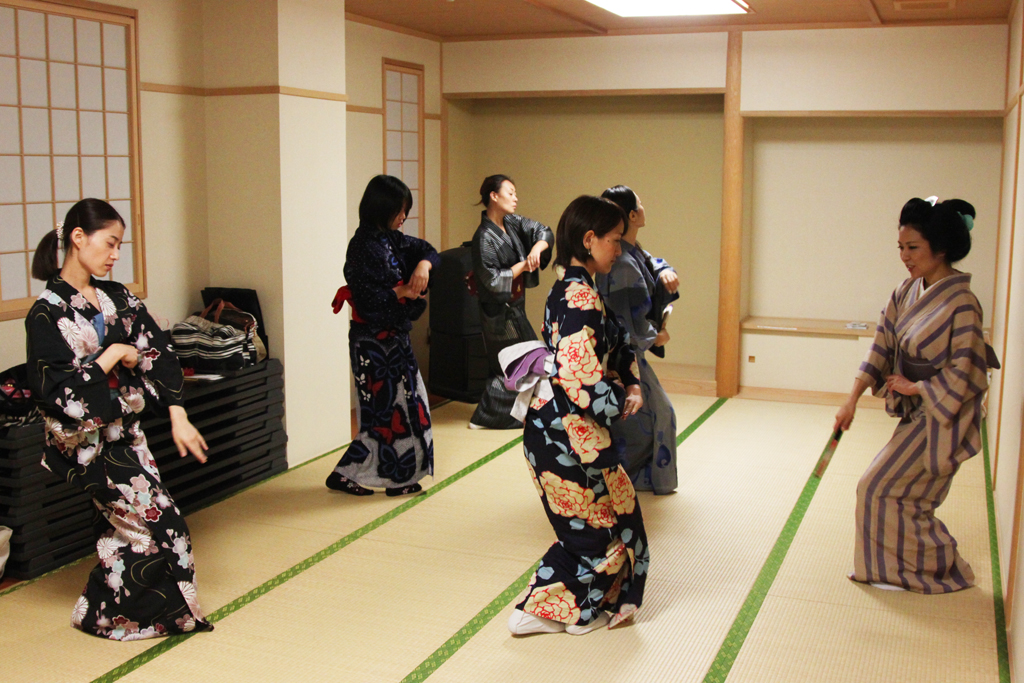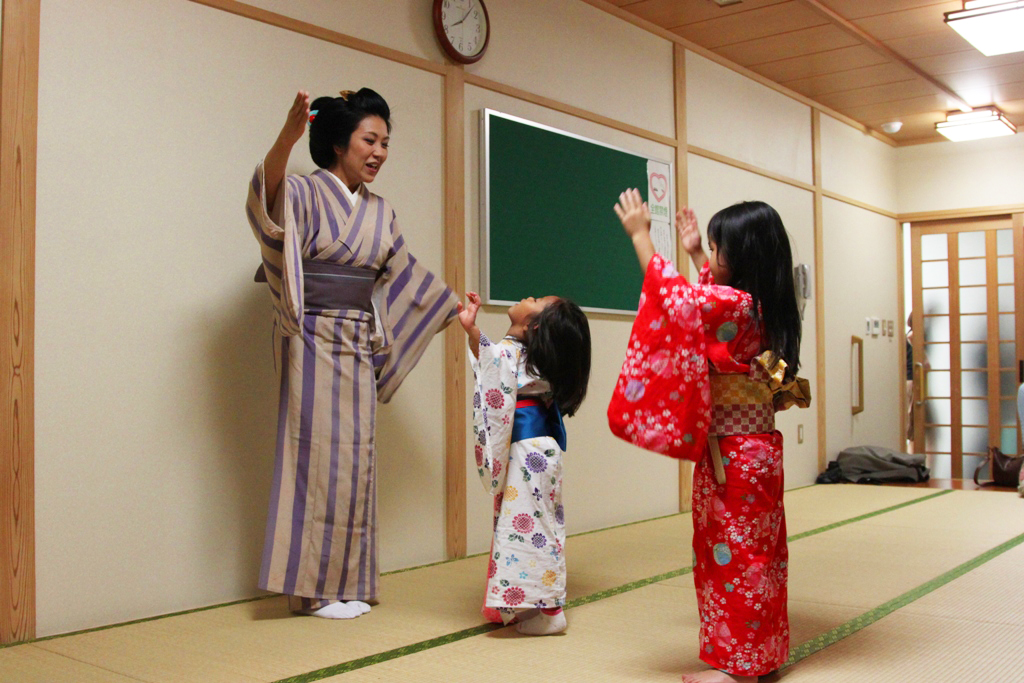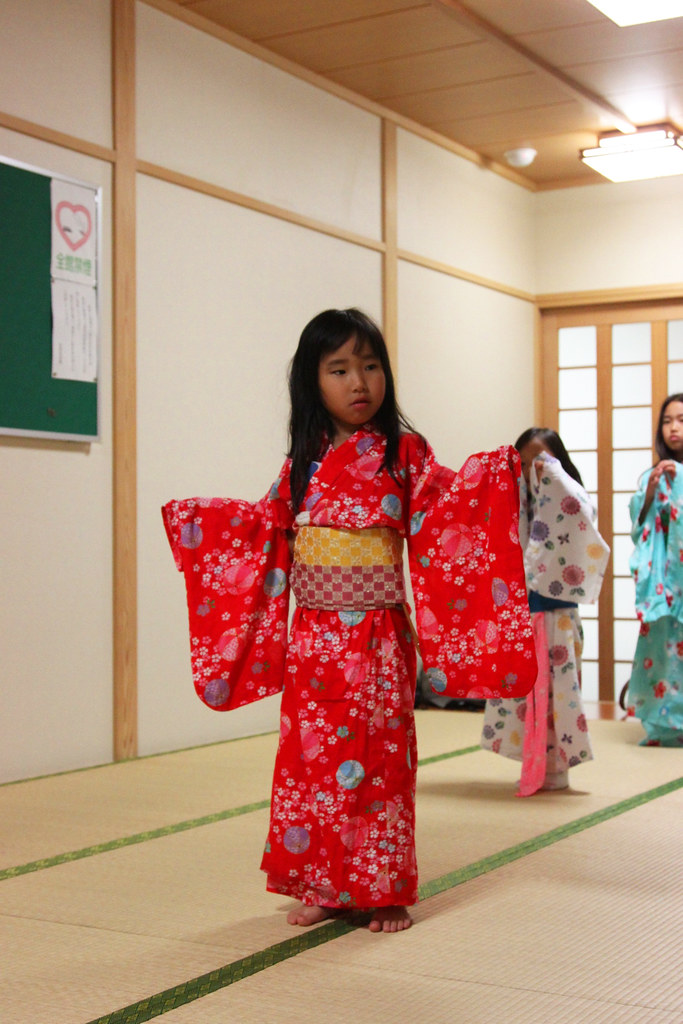жЬ®жЫЬжЧ•, 11жЬИ 8th, 2012...6:31 PM
Japanese buy≈Н
Reading time: About 4 minutes
Japanese buy≈НToday we will be talking about Chisato Otomo, who specializes in two seemingly opposite professions. She is both a fashion designer and an instructor of new Japanese buy≈Н, a genre of the traditional dance associated with geisha. The pictures provided are from one of the practice sessions, which we managed to sit in on.
Ms. Otomo, born and raised in Fukagawa, Tokyo, first started practicing new Japanese buy≈Н at a young age. Her mother became too busy to care for her, and decided to send her to lessons of some kind. As it turned out, the Japanese buy≈Н studio was closest to their house, and so at the age of two, she started down the path of traditional Japanese dance.
For the ten years when Chisato Otomo was in her twenties, she distanced herself from dance to pursue her goals in the world of fashion. At that time, Shibuya 109 was making it big in fashion geared for kogyaru (trend-conscious teenage girls), starting with collections of loose socks. Ms. Otomo decided to try her hand at designing fashion for the popular and trendsetting Shibuya 109.
Of course she excelled at Japanese buy≈Н, but Chisato Otomo was also well known for her dance skills in the night life scene, enough to be called the вАЬQueen of Dance.вАЭ Ms. Otomo loved to dance, and when she was twenty five she started learning the flamenco. After studying the flamenco for several years, she felt that the messages behind the songs were a bit too secular, and her passion for the dance started to decline. Thus she turned back to Japanese buy≈Н with rekindled enthusiasm.
When she returned to the world of new Japanese buy≈Н when she was thirty she was met with extreme happiness by her instructor. At thirty two, she received her own dance instructorвАЩs permit, and now holds dance training sessions.
Ms. Otomo also hosts geisha parties at hanami (flower viewing) season and at the end of the year, and is highly involved in the development of Japanese culture.
Dance sessions geared for children are also available.
The widely used term Japanese buy≈Н (including the new Japanese buy≈Н style) is used to refer to traditional Japanese dance, just as Western buy≈Н is used to mean western dance. To break things down further, Japanese buy≈Н is composed of three basic body movements, mai, odori, and furi. While all three words can be translated as dance, they hold various nuances. The word mai refers to quiet shuffling movement across the stage in synchronization with the music, odori involves more body movement within the dance, where the dancer creates rhythm with their feet along with the accompaniment, and furi is where the dancer uses gestures and expressions to add to the music.
There are numerous opinions regarding the origin of dance in Japan, but it is said that JapanвАЩs first dancer was Ame-no-Uzume-no-Mikoto, a goddess that appears in myths over 2000 years old. JapanвАЩs first ceremonial Buddhist dances were mainly for encouraging healthy crop harvests and for calling down rain. There is also the Bon Odori, a dance performed during Bon, in honor of the spirits of the dead. These dances, and others that people are aware of, have existed for over 1600 years, and continue to be well performed in the present age.
In addition, the dances performed in modern day Kabuki plays are also called Japanese buy≈Н, but only have a history of 400 years, a short time when seen aside JapanвАЩs long history of dance.
Currently, what people call Japanese buy≈Н encompasses a wide variety of dancing styles. Dances that are not performed to Kabuki music are called new Japanese buy≈Н. All buy≈Н dances, however, are performed while wearing a kimono.
вЦ†Dance lessons with Ms. Chisato Otomo
Lessons are held every Wednesday, in the Japanese-style room on the second floor of the Kumin Hall, Tomioka, Koto-ku, Fukagawa Tokyo. Classes start at 6:30pm and go for one hour. From 7:20 on is childrenвАЩs class.
Place: Kumin Hall: Tomioka, Koto-ku, Tokyo 1-16-12
Access: two minute walk from the no. 1 exit of Monzen-Nakacho Station on the Tokyo Metro Tozai Line. A six minute walk from the no. 5 exit of Monzen-Nakacho Station on the Toei Subway Ooedo Line.
In addition, there are in-home lessons available as well.
For inquiries:
geisha-designer@nifty.com
https://geisha-designer.com/

























2 Comments
11жЬИ 14th, 2012 at 5:27 PM
Loving the Japanese culture! I signed up to take lessons at Learn Japanese In Singapore, hopefully it’ll be good.
11жЬИ 17th, 2012 at 10:22 PM
Thanks for the interesting read!
However, if by “new buyo” you mean “shin buyo” could you please make it clearer that it is a more modernized form than more traditional buyo styles?
Shin buyo compared to more traditional buyo is like comparing Broadway to opera.
Leave a Reply